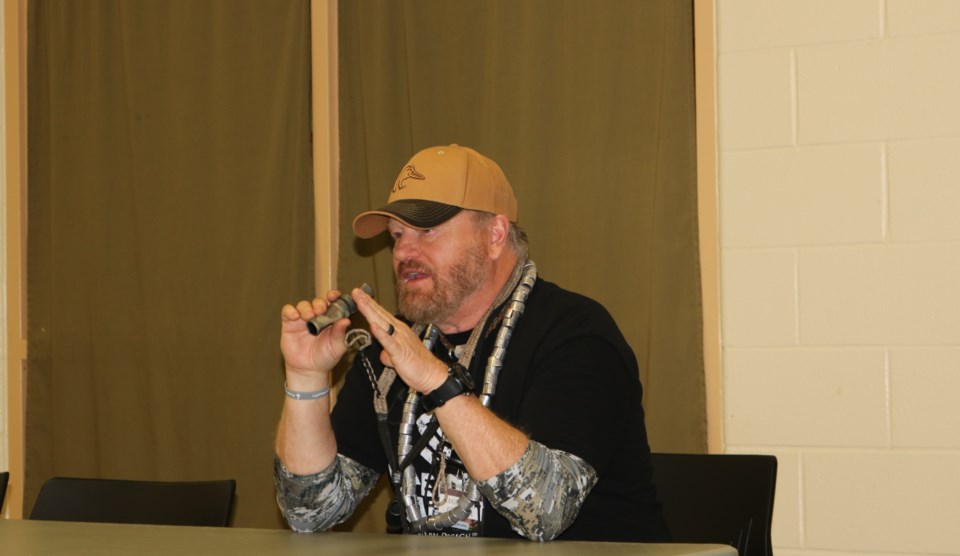YORKTON - If you want to use a call for geese, ducks, wild turkey or coyotes, start by learning the basics and then practice, practice, practice.
That was the message those attending a goose calling seminar at the Parkland Outdoor Show & Expo heard from veteran caller and podcast George Lynch with Legendary Gear.
When it comes to calling, Lynch likened the process of becoming a good caller to a baseball player becoming a good batter. Through practice you create muscle memory which allows a ball player to consistently repeat a good swing, or a caller to make good calls.
Lynch also said a call “is a musical instrument” so like any musician practice is essential.
But practice only helps if you are doing it correctly to start with.
“You can’t be a .300 hitter with a bad batting stance . . . Practice don’t make perfect if you’re doing it wrong . . . Perfect practice makes you perfect,” he said.
When it comes to calling there are various elements but it starts with learning to consistently push the air out into the call since “air creates the vibrations” which ultimately make the sound.
The air essentially travels a channel from the throat through the call, said Lynch, adding “the tongue is another part of the channel,” that can be used once the basic of pushing air is mastered.
“When you talk you’re actually pushing air to make the sound of your voice. Your tongue it utilized to end the note,” said Lynch adding it is much the same with a call.
In practising with a call “always start slow,” said Lynch, adding you can increase the frequency of air pushed as you go.
If unsure of the difference between blowing and pushing air, Lynch said to stand in front of a mirror and push air in a way that the mirror fogs and you have the core approach to a call.
The sound is also much like a ‘he’ sound, he said, adding in time you add a ‘ik’ sound after the ‘he’ to more fully get the basic of a goose call sound.
Ultimately there is a personal element to calling too.
“I can tell you the mechanics but I can’t jump in your throat,” said Lynch, adding each caller must learn how much air they need to push to lift the reed inside the call, and then learn to maintain that level.
The hands around the call play a role once the foundation is in place.
“Hands come into use . . . to change the tone,” offered Lynch.
Lynch suggests birds have a language, but he believes it’s more rudimentary with them.
“They don’t have words that we have . . . It’s all based on emotion,” he said, adding their calls are based on their “physical state of mind . . .
“Their language is all based on emotion.”
So callers need to listen and know how to respond to draw birds in.
Lynch also said the idea of trying to bring an entire flock in is the wrong approach.
Family units within a flock are looking out for themselves.
“You’re not calling everybody in to eat you out of house and home,” Lynch related.

